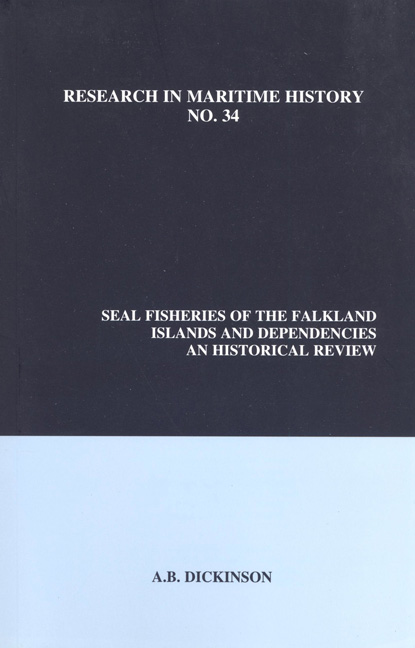Book contents
- Frontmatter
- map
- Contents
- List of Tables in the Text
- List of Illustrations
- About the Author
- Chapter 1 Introduction
- Chapter 2 Unregulated Sealing in the Falkland Islands
- Chapter 3 The Development of a Regulated Industry
- Chapter 4 Unregulated Sealing in the Dependencies
- Chapter 5 Regulated Sealing in the Falkland Islands, 1881-1914
- Chapter 6 Pelagic Sealing
- Chapter 7 Twentieth-Century Sealing on the Falkland Islands
- Chapter 8 Controlled Sealing at South Georgia
- Chapter 9 Aftermath
- Appendices 1-8
Chapter 5 - Regulated Sealing in the Falkland Islands, 1881-1914
- Frontmatter
- map
- Contents
- List of Tables in the Text
- List of Illustrations
- About the Author
- Chapter 1 Introduction
- Chapter 2 Unregulated Sealing in the Falkland Islands
- Chapter 3 The Development of a Regulated Industry
- Chapter 4 Unregulated Sealing in the Dependencies
- Chapter 5 Regulated Sealing in the Falkland Islands, 1881-1914
- Chapter 6 Pelagic Sealing
- Chapter 7 Twentieth-Century Sealing on the Falkland Islands
- Chapter 8 Controlled Sealing at South Georgia
- Chapter 9 Aftermath
- Appendices 1-8
Summary
Although American sealers continued to hunt occasionally around the islands in the late nineteenth century, they paid greater attention to the more abundant fur seals on Cape Horn. L.P. Simmons (Capt. J.W. Budington) of New London took 86,000 skins there in 1878. The crews of Falklands’ vessels sailing to and from Punta Arenas in southern Chile often reported many seals swimming from South America towards the islands. Optimistically, the government thought that this was an attempt to establish new breeding sites in the colony and escape the heavy sealing pressure now placed upon them. Most likely, however, these were normal feeding or migration movements. Nonetheless, to encourage the rejuvenation of island breeding places, to minimize disturbances during pupping and mating and ultimately to revive the industry, the government introduced the Seal Fishery Ordinance 1881. This established a closed season in the colony and Dependencies from 1 October to 1 April and specified fines up to £100 and £5 for each seal killed in contravention. The master or owner of an offending vessel could also be fined up to £300 and would be forced to forfeit the catch.
Although its introduction was a laudable move to encourage stock growth, the effectiveness of the ordinance was reduced because of the continued lack of enforcement capacity. At the request of Governor Kerr, the Royal Navy did, however, detach HMS Dwarf (Capt. William Wiseman) from its squadron at Montevideo in December 1881 to act as a seasonal protection vessel. Its crew discovered a sealing camp on Bird Island belonging to Adelia Chace (Capt. Simon Church), perhaps the only vessel still sealing from New Bedford. The crew of thirty-five Portuguese, doubtless from the Azores or Cape Verde Islands (“a very dirty looking mob; they feed on the seal blubber principally and don't get any pay”), had already taken 580 fur seal skins. HMS Dwarf also apprehended the local cutter Two Sisters (Capt. Janson) of Stanley at New Island on suspicion of illegal sealing. Both masters subsequently agreed not to catch any more seals during the closed season. Such hunts probably further reduced fur seal stocks, perhaps a primary reason why licensed sealer Charles Hansen could only take seventeen skins from his concession on Carcass Island in 1882.
- Type
- Chapter
- Information
- Seal Fisheries of the Falkland Islands and DependenciesAn Historical Review, pp. 79 - 94Publisher: Liverpool University PressPrint publication year: 2007



